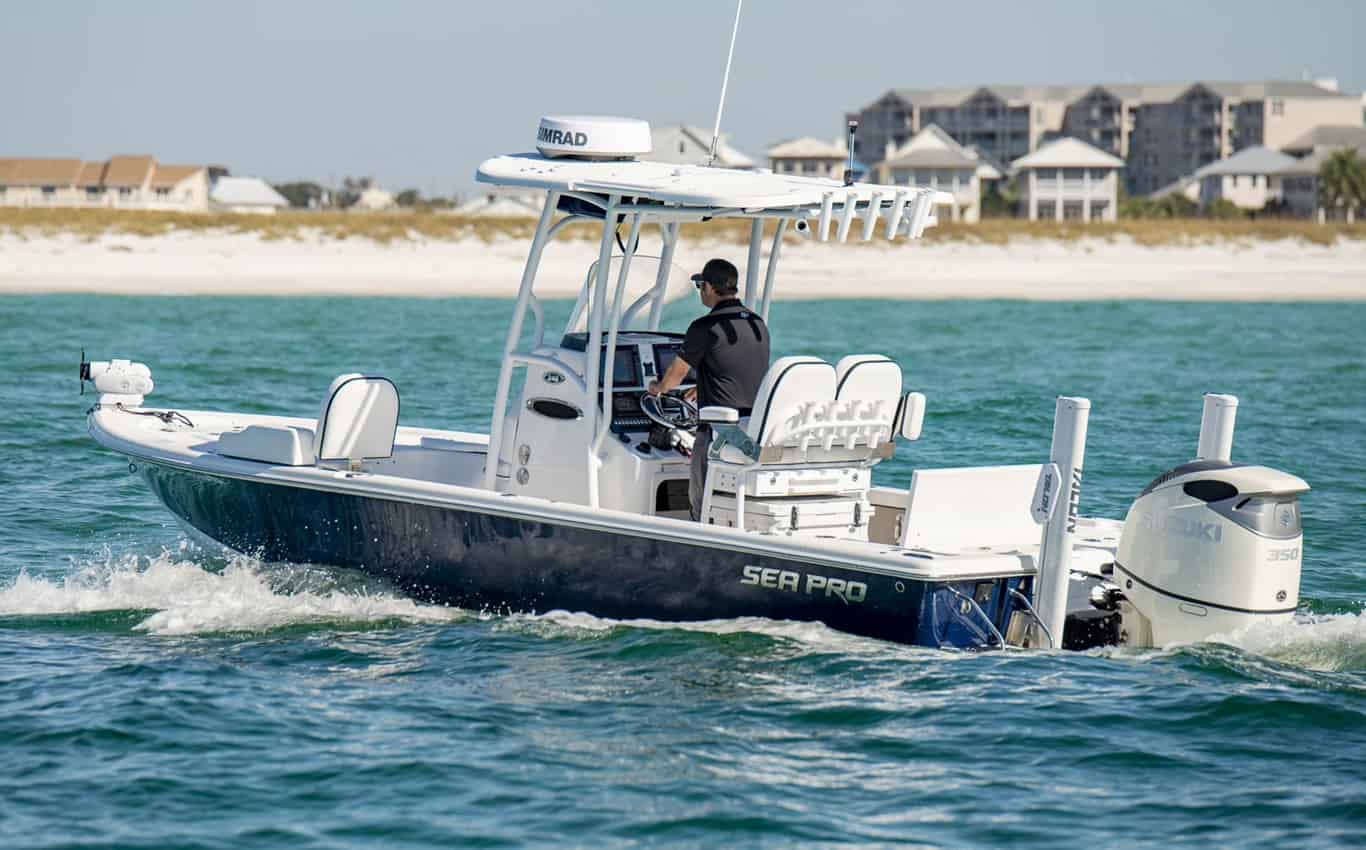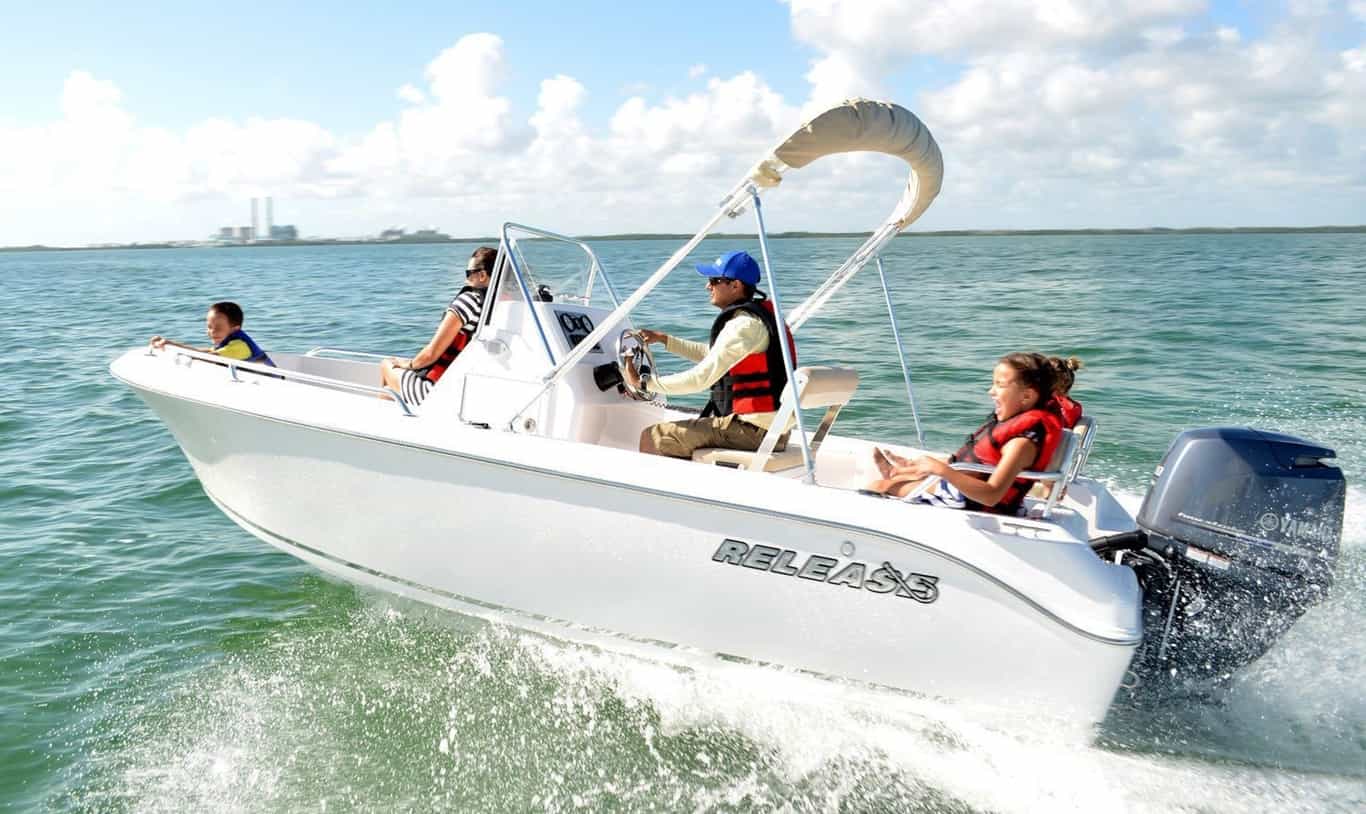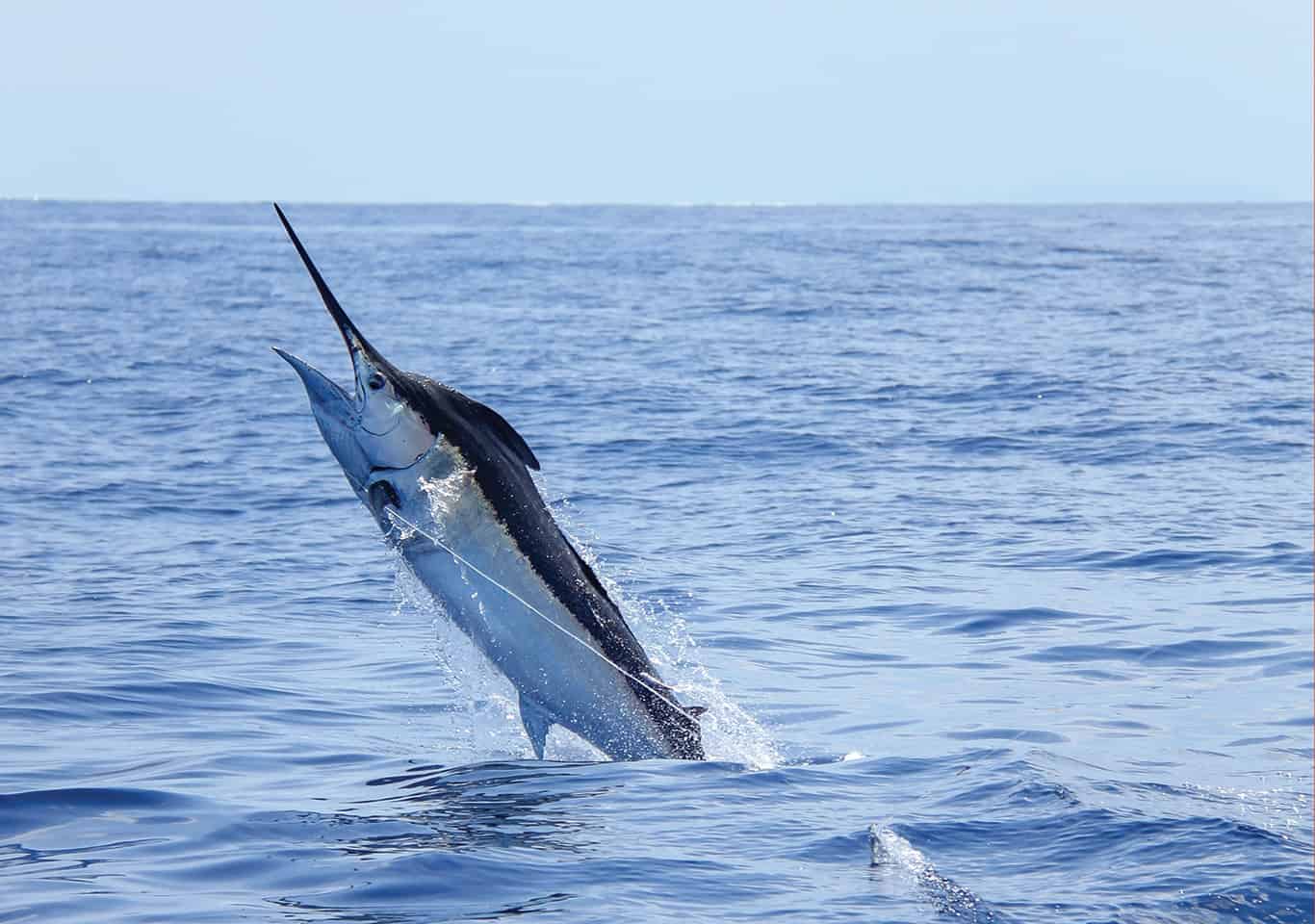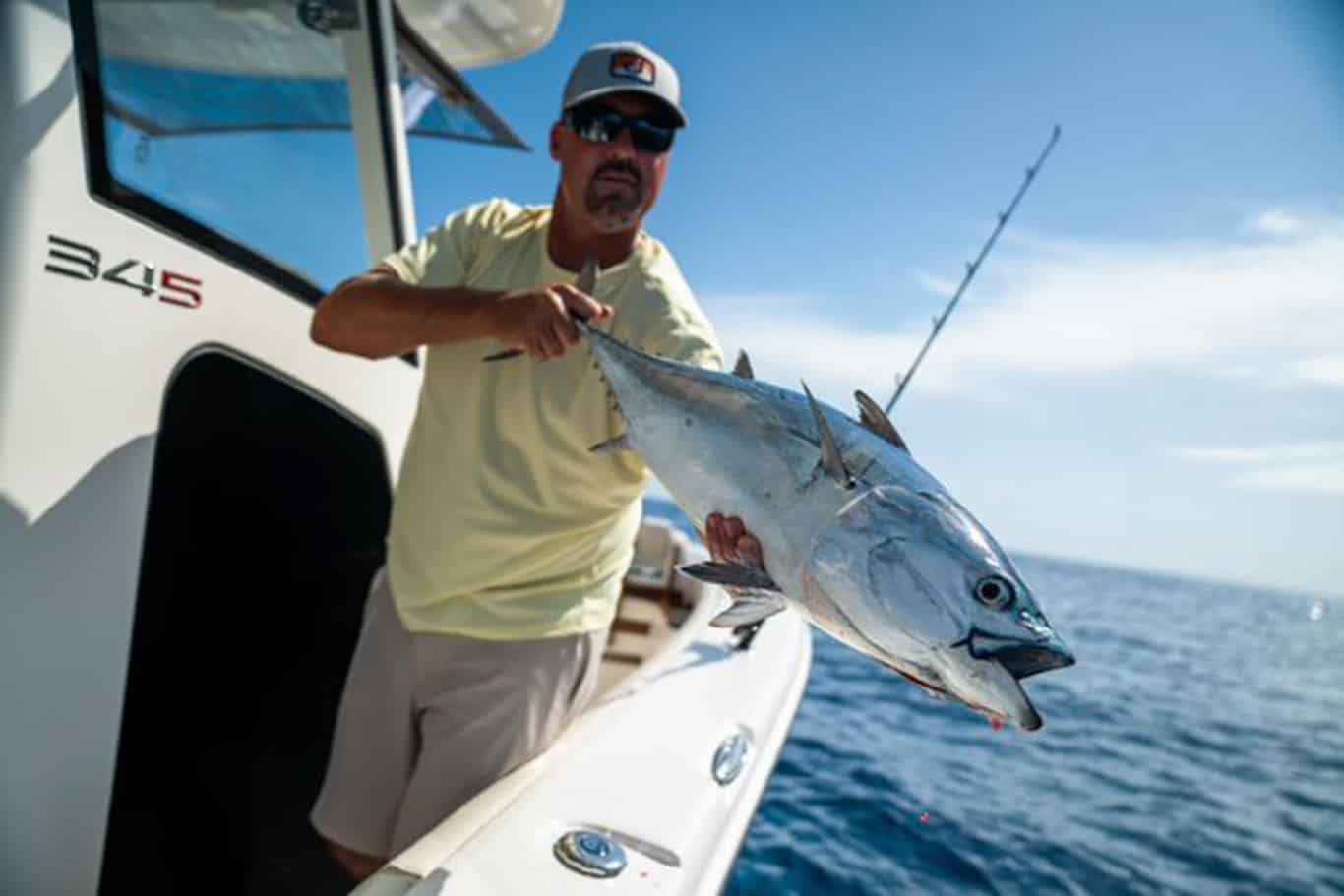
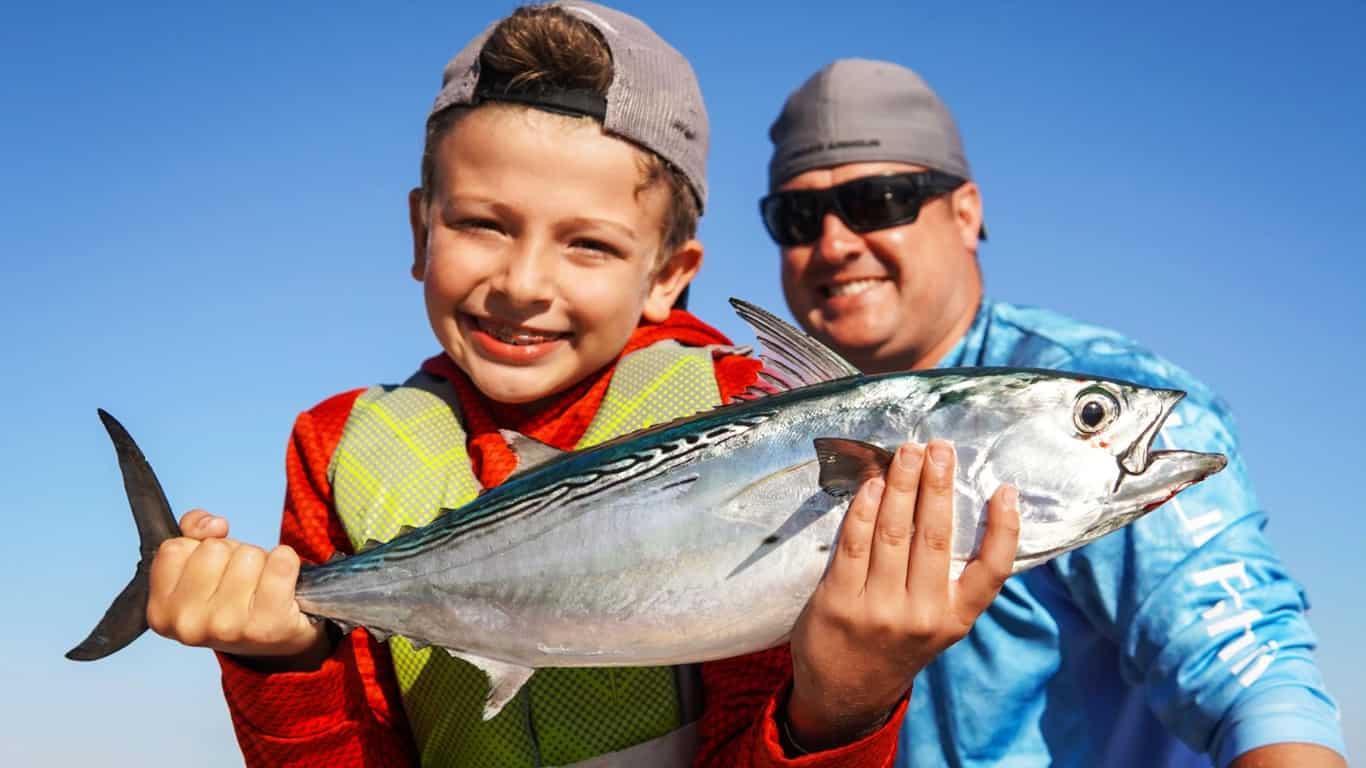
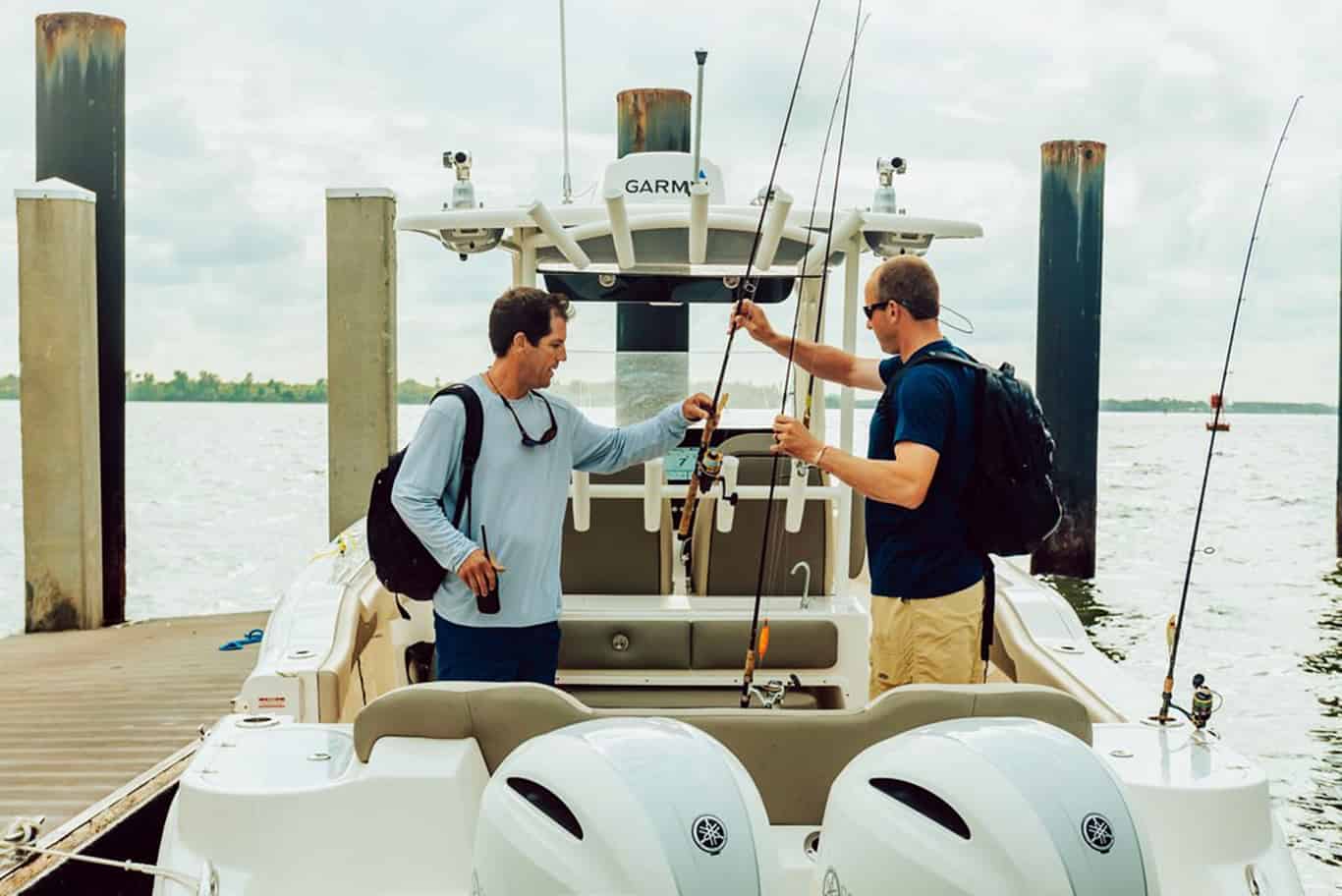
 +3
+3 Florida Fishing | A Basic Primer for Fishing the Emerald Coast
Florida Fishing | A Basic Primer for Fishing the Emerald Coast
Florida Fishing | A Basic Primer for Fishing the Emerald Coast
Florida Fishing | A Basic Primer for Fishing the Emerald Coast
Florida Fishing | A Basic Primer for Fishing the Emerald Coast
Florida Fishing | A Basic Primer for Fishing the Emerald Coast
For many, the lure of warm weather, Florida fishing, seemingly endless access to pristine waterways, and boundless opportunities for fun and adventure are plenty enough to captivate and entice folks from all over the world to drop anchor in the Sunshine State.
BOATER & ANGLER PARADISE
For those with salt- or freshwater DNA, Florida represents a paradise for boaters and anglers. Boasting 12,133 square miles of water, including 2,276 miles of spectacular tidal shoreline, Florida offers up 12,000 miles of fishable rivers, streams, and canals along with 7,700 lakes of 10 acres or more covering three million total acres. Nationally, Florida ranks among the top in boat registrations with more than 925,000 and growing at last count.
Those of us fortunate enough to live and play in the Panhandle would likely agree there are few places on earth as stunning as our emerald-kissed coastlines. While many enjoy and take ample advantage of the area’s beautiful beaches, there are countless scores of die-hard outdoor aficionados who are equally thrilled by abundant fisheries and habitats, which claim more than 200 species.
It’s a fact: Florida is recognized as the “Fishing Capital of the World,” owning more record fish catches than any other state or country, according to the Florida Fish and Wildlife Conservation Commission. In addition, the International Game Fish Association validates Florida as #1 in fishing records with a whopping 925 currently on the books, far exceeding #2 Alaska and #3 California, trailing with 300+ respectively. Of interest, the American Sportfishing Association documented 4,143,121 anglers spent $6.6 billion fishing in Florida.
Suffice to say, if you’re living or visiting here regularly and don’t have a fishing story to share, some might suggest you’re missing the proverbial boat.
There’s no time like the present to cast a line and get started; this basic introduction to NW Gulf Coast fishing is for you!
FISHING FLORIDA
Anyone may fish in Florida, but a license is required for purchase at your closest tax collector’s office, local bait and tackle shop, or major big-box retailer like Wal-Mart; by credit card online via GoOutdoorsFlorida.com; or toll-free 888 FISH-FLORIDA. There are a few exceptions to the licensing requirement rule, including Florida residents 65 and older who qualify for a free hunt/fish certificate and youth under the age of 16, all of whom must abide by all other statewide fishing regulations.
Fishing permits are required for saltwater and freshwater activity; combo licenses are available. Targeted species like tarpon, reef fish, shore-based shark fishing, snook, and lobster require special licenses. Avid anglers may choose to purchase a lifetime license.
FISHING 101
If you yearn to learn, there are a sea of resources available to help you get underway.
Cruise on over to the Florida Fish and Wildlife Conservation website at www.myfwc.com, which is brimming with helpful content and all sorts of tips to get you in the bite. Find a slew of awesome articles, videos, and details about everything from rules and regulations to where and how to fish for different species, how to take a child fishing, or about participating in saltwater or freshwater fishing clinics.
A good spot to start may be educating yourself about the types of fish and species available in our local waterways via the Fishing Lines field guide.
To maximize the potential strike, newbies targeting certain species should bone up on moon phases, tides, water temps, and time of day, as well as learn about which habits and food sources fish prefer.
A highly respected national resource is the Recreational Boating and Fishing Foundation (RBFF), which offers a treasure trove of expert content and publishes an online directory of places to fish, customizable by your zip code, at www.takemefishing.org. The site also offers quarterly forecasts and recommendations by market on fishing seasonality with peak fishing times.
Locally, Half Hitch Tackle is a long-standing leader in the fishing community, with five locations strung along the Panhandle’s coastline. Half Hitch produces monthly fishing forecasts and information by location with GPS links, while its website — www.halfhitch.com — serves up a wealth of helpful fishing tips and video. Half Hitch and other reputable bait shops are great beginner’s resources for securing the right type of gear for your fishing activity of choice.
Several state and regional publications and podcasts offer awesome targeted fishing content worth review, such as Florida Sportsman, Florida Sportfishing, Coastal Angler, Florida Fishing Podcast, and Great Day Outdoors, among other forums, all of which are easily searchable online. A top subscription-based service that offers outstanding educational fishing courses is www.saltstrong.com. Drill down and search regional Facebook group pages for hyper-localized fishing content.
Many marine retailers throughout the region also feature fishing content online and/or conduct live seminars, though many have been temporarily curtailed during the COVID-19 pandemic.
FISHING HOTSPOTS
Any honest angler will admit that fishing hotspots are closely guarded secrets.
However, a great draw for anglers and divers alike is the estimated 3,769 artificial reef locations in both state and federal waters, ranging from 4 to 500 feet in depth, with an average of 62 feet. The NW Gulf Coast reveals a bounty of delectable reef species like snappers, groupers, and triggerfish.
When it comes to bragging rights, nothing delivers a more impactful adrenaline rush than stalking elusive billfish, from magnificent sailfish to majestic blue marlin. Offshore waters also provide the perfect hunting ground for dolphin (mahi-mahi), wahoo, Spanish and king mackerel, cobia, blackfin and yellowfin tuna, and sharks, among others. At the same time, popular inshore pursuits include redfish, speckled trout, sheepshead, and flounder.
The Pensacola Bay estuary features nearshore and inshore mix of saltwater and freshwater fusion, spawning nurseries for young fish, shrimp, and crabs. Santa Rosa and Escambia counties include the 92-mile Escambia River, the fourth largest in Florida, boasting a resplendent mix of 85 native freshwater species. The 49-mile Blackwater River in Okaloosa and Santa Rosa counties is better known for canoeing, kayaking, and paddlesport activity than fishing.
The state’s third-largest river system in terms of water volume is found on the Choctawhatchee River, which runs 96 miles and serves up a rich array of bluegill, sunfish, catfish, largemouth and striped bass, and black crappie, among others.
Choctawhatchee Bay spans Okaloosa and Walton counties and is known as an inshore, saltwater mecca with favorable, year-round fishing.
In Bay County, the St. Andrew Bay watershed connects creeks, bays, and lakes over 1,100 square miles in yet another nutrient-rich habitat.
If it’s fish you want, the NW Gulf Coast has got it … in abundance!
GETTING TO THE FISH
With your license in tow, you are free to cast from any number of bridges, piers, beaches, or from a boat … wherever your inner angler takes you.
If the idea of boating to secret inshore, nearshore, or offshore destinations appeals, consider investing in a new or pre-loved boat; joining a boat club; renting a boat; or chartering with a professional fishing captain or guide.
“If you’re considering the purchase of a boat primarily for fishing, be sure to consult with a marine industry professional who can help you choose the best vessel for your desired lifestyle and budget,” said Shawn Talpey, president of Emerald Coast Marine, a leading regional marine retailer with three locations on the NW Gulf Coast whose dealership sells and services several top fishing brands. “There are plenty of new and premium pre-owned boats available for fishing at a variety of price points, so be sure to work with an organization who is committed to helping you identify and source the right type of boat to meet your specific needs.”
According to Talpey, determine your top priorities and key distinctions by considering
- The number of people you need to accommodate
- Creature comforts
- Vessel size and type
- Boat storage … or will you trailer?
- Vehicle towing capacity
- Inshore, offshore, nearshore boating priorities
- Budgetary constraints
With fishing boats ranging from a $500 kayak to a $2 million sport fisher, the good news is there are boats for every budget and designed expressly for fishing. Choices range from the basic jon boat to the latest, most technologically advanced offshore dream machine with all the electronic, fish-finding bells and whistles.
If you’re more interested in chartering, there are scores of operations in the region. Search and review websites or Facebook pages, along with customer rankings and comments, to understand what the experience entails, along with pricing and provisions.
“Reputable charter boat captains should provide key details to prospective customers about the boat they offer, its accommodations and the type of fishing charters available,” said Captain Dave Heath of H & H Sportfishing Adventures/I’m Hooked II, which operates in the Destin market and is berthed at Emerald Coast Marine. “Ask plenty of questions and do your due diligence to ensure you book the right type of charter for your outing.”
“In addition, he added, “be sure to review the facility’s amenities to ensure you have access to all the provisions needed.”
Another option: hire a fishing guide.
“Besides traditional charters which are great for getting you on the fish, I also recommend new anglers consider a fishing guide if you’re interested in education and having a bona fide learning experience on the water,” said long-time angler Captain Alex Hensley, a marine consultant with Emerald Coast Marine. “An experienced guide will take you to the exact type of fishing venue that interests you and provide an awesome learning adventure.”
READY, SET … LET’S GO!
Ready to fish and cut bait?
Hopefully, this simple primer has provided basic tools, resources, and insight to inspire and help you launch a fabulous new fishing experience here on the Emerald Coast.
Hope to see you on the water!




